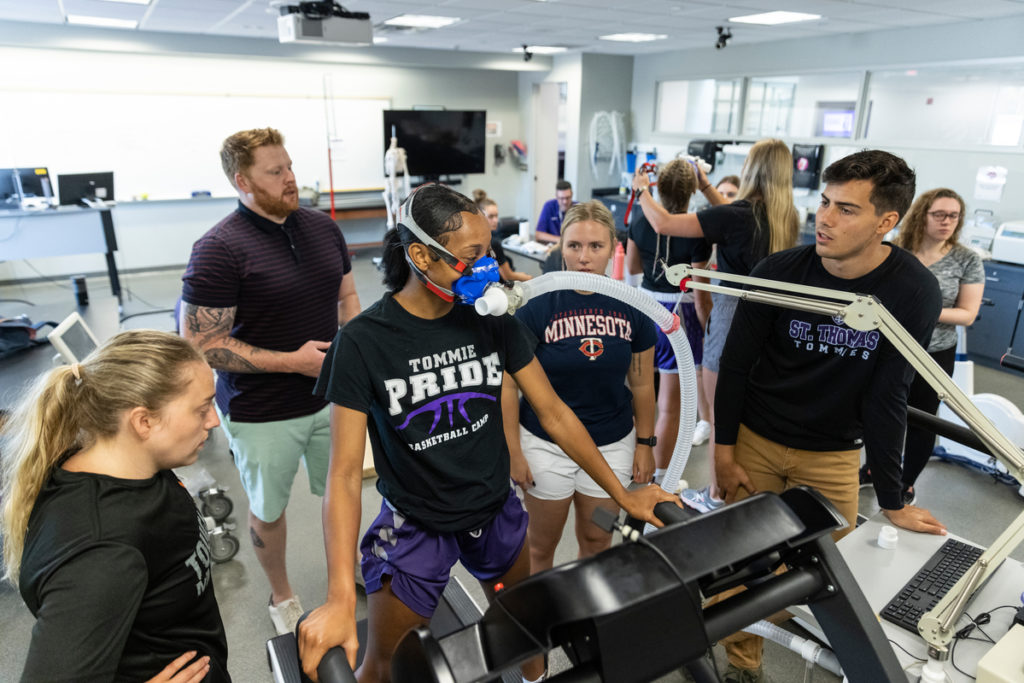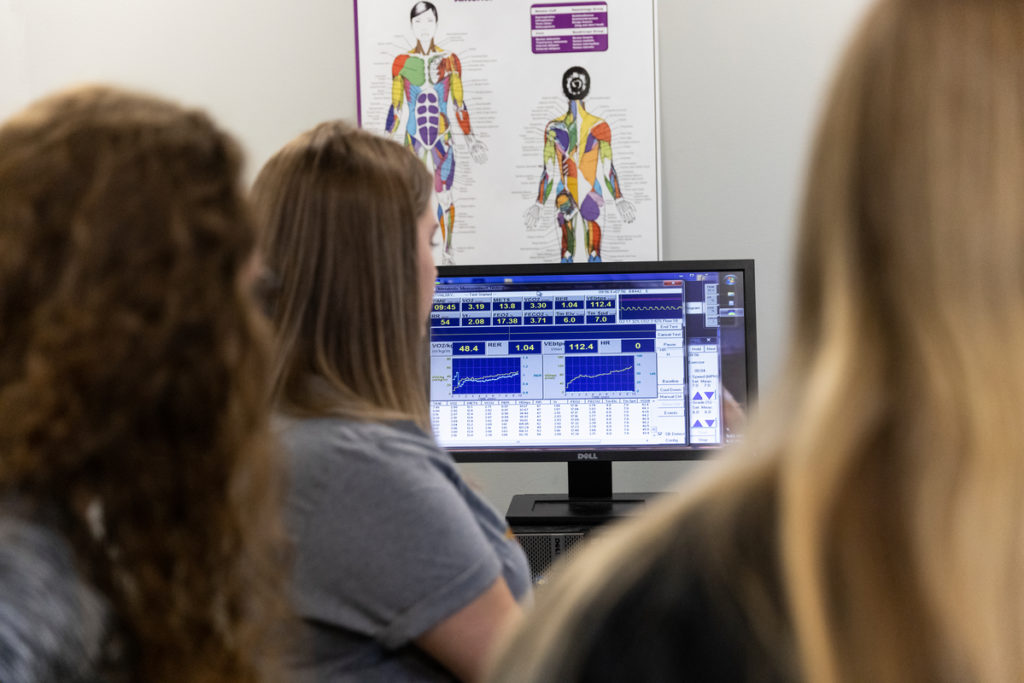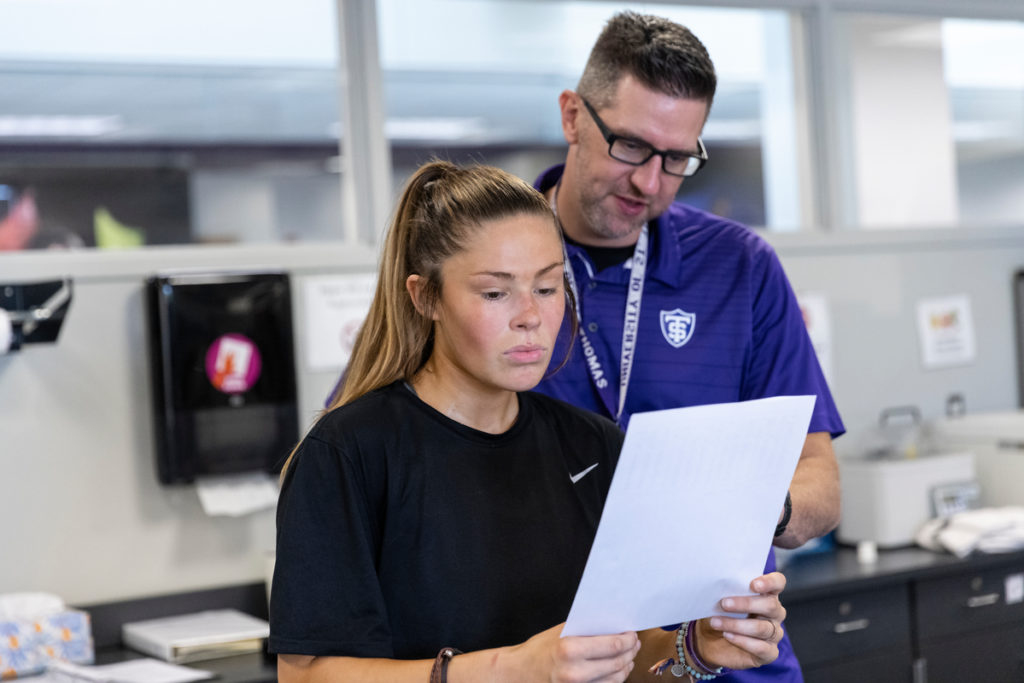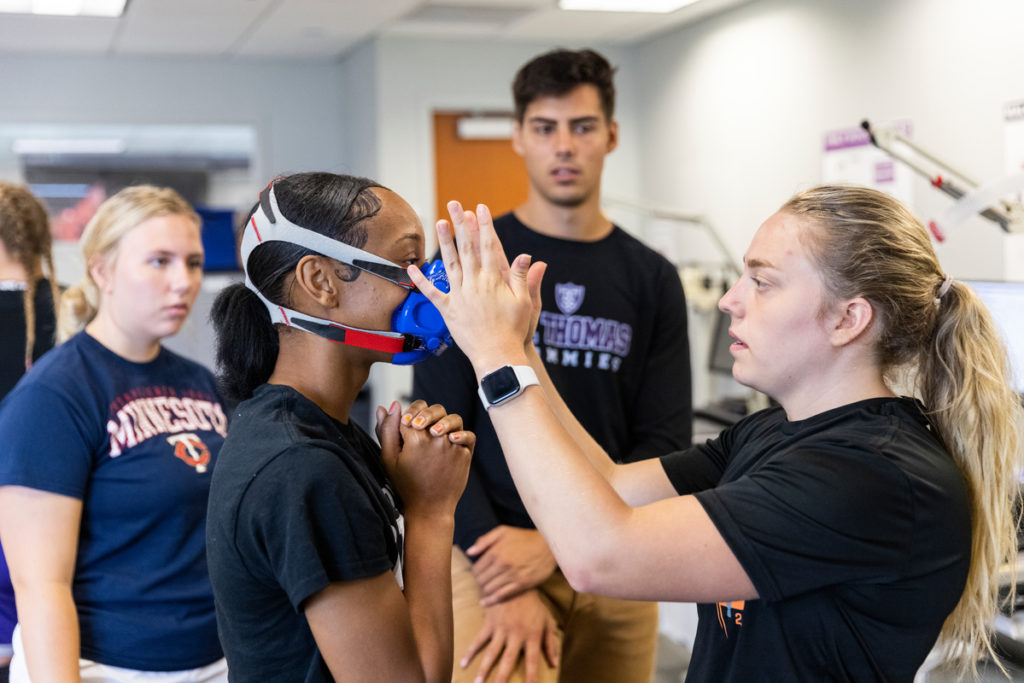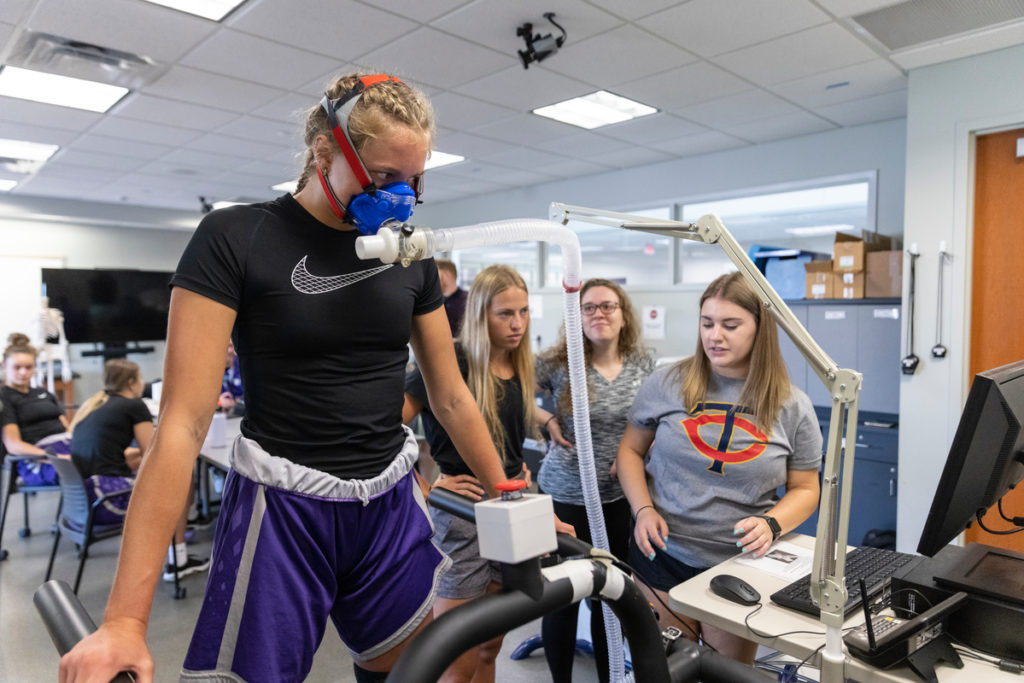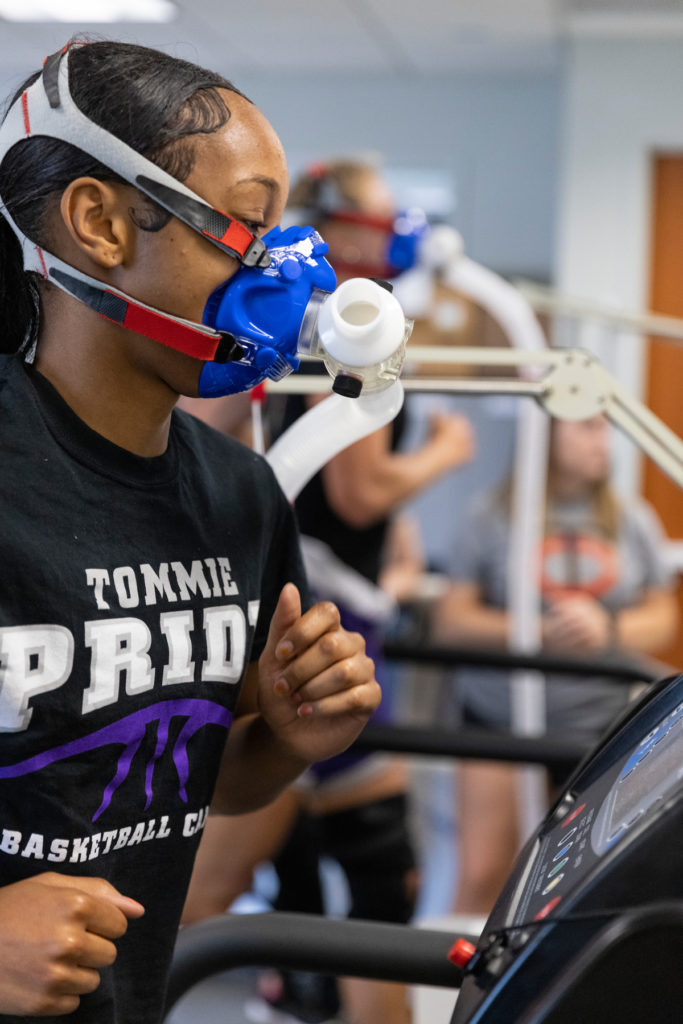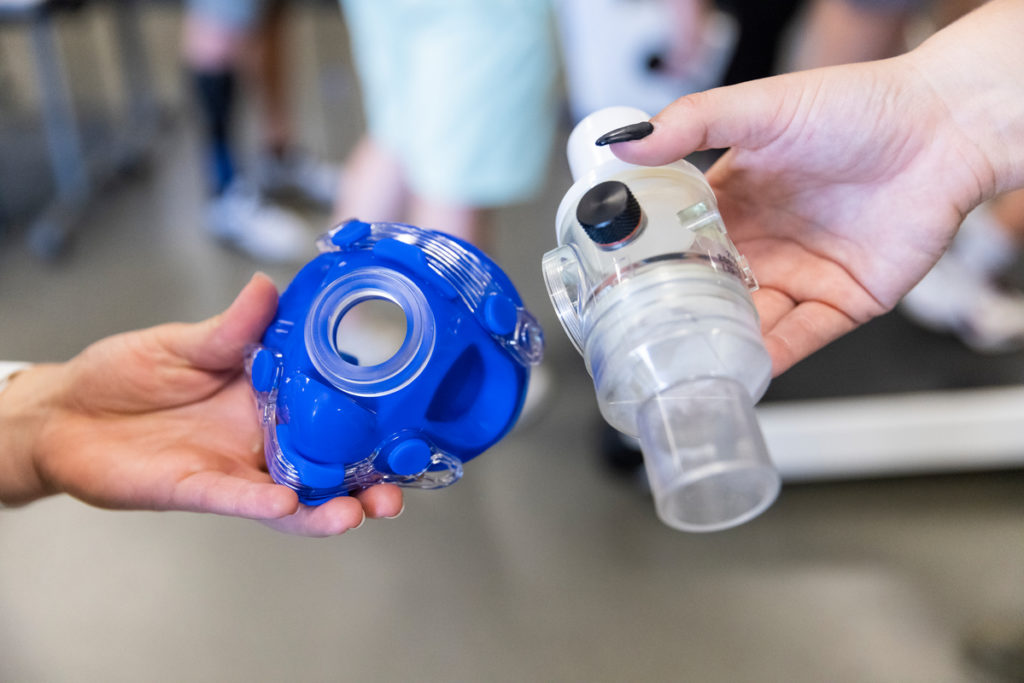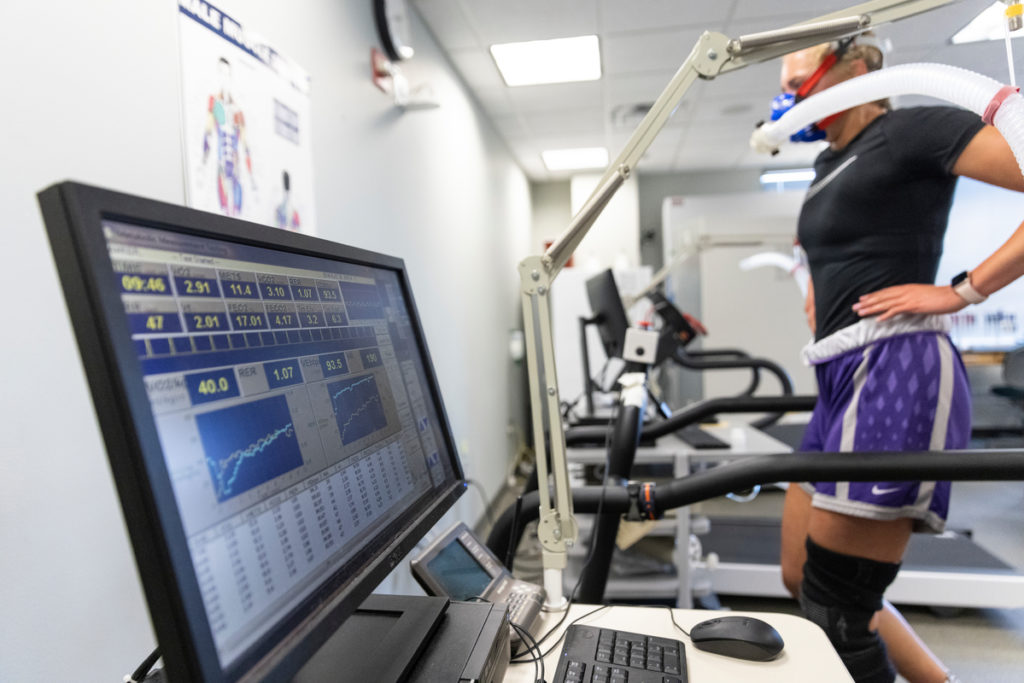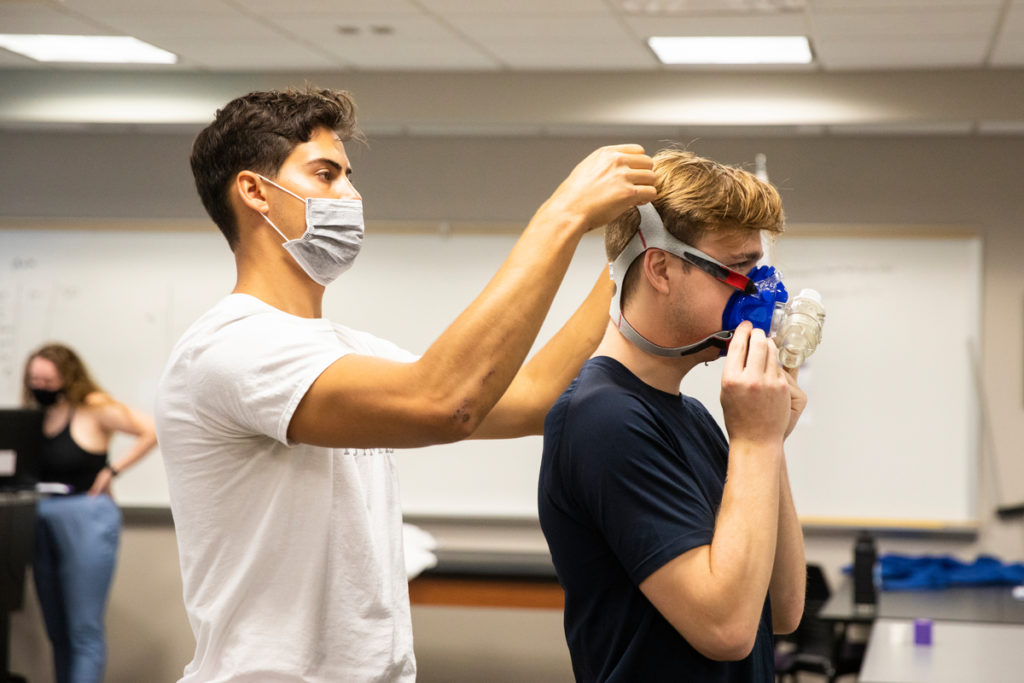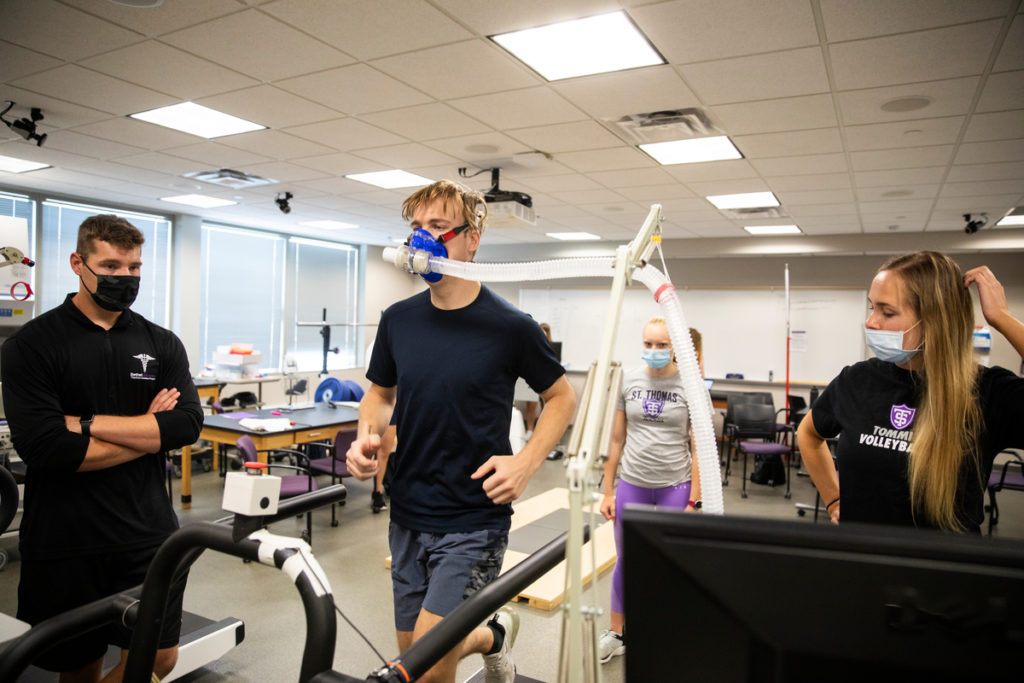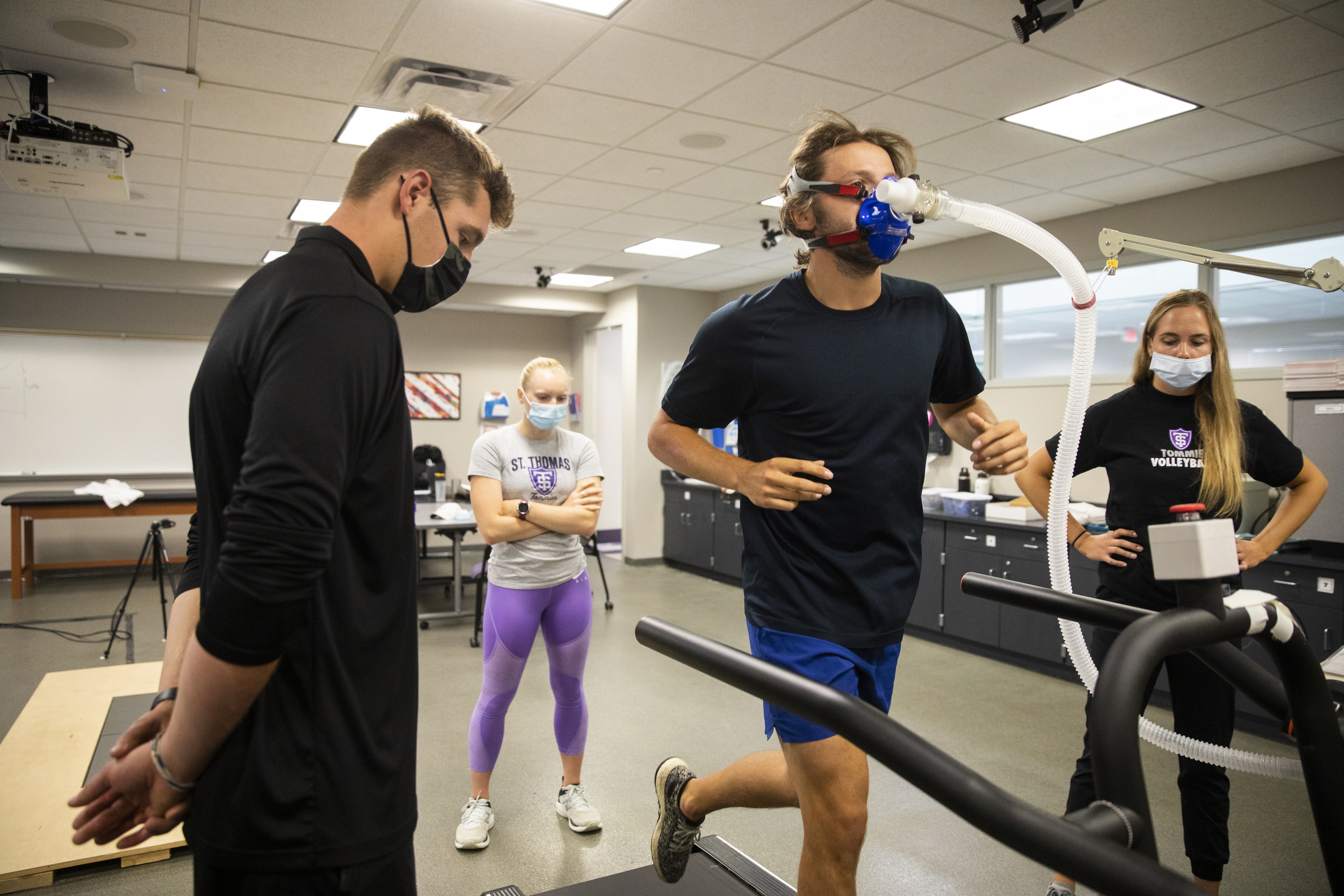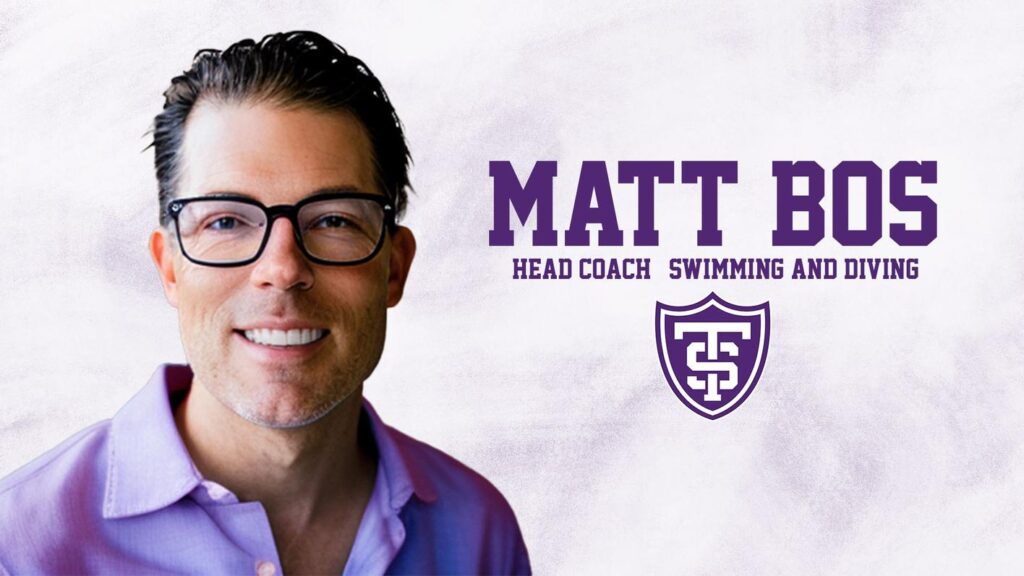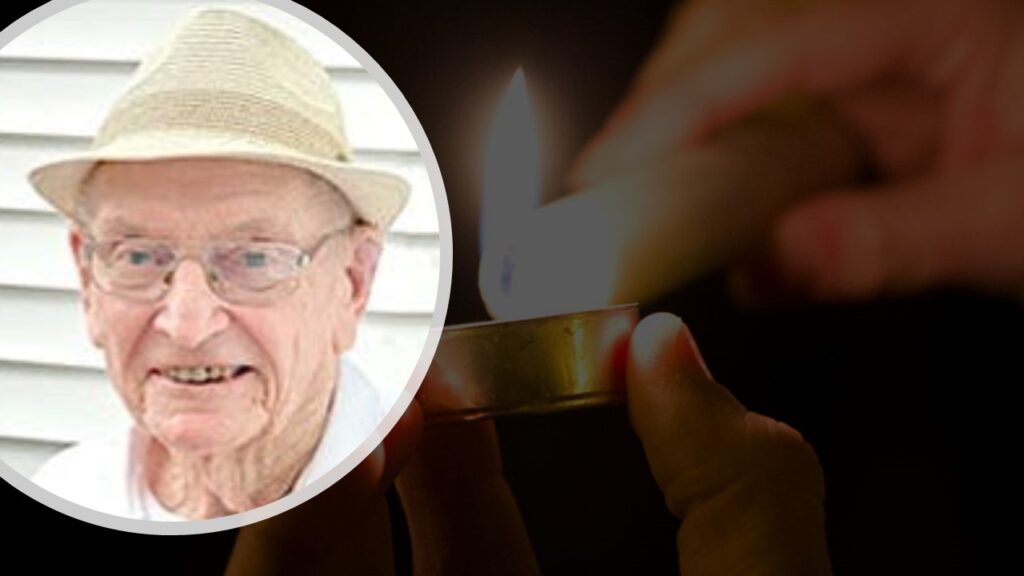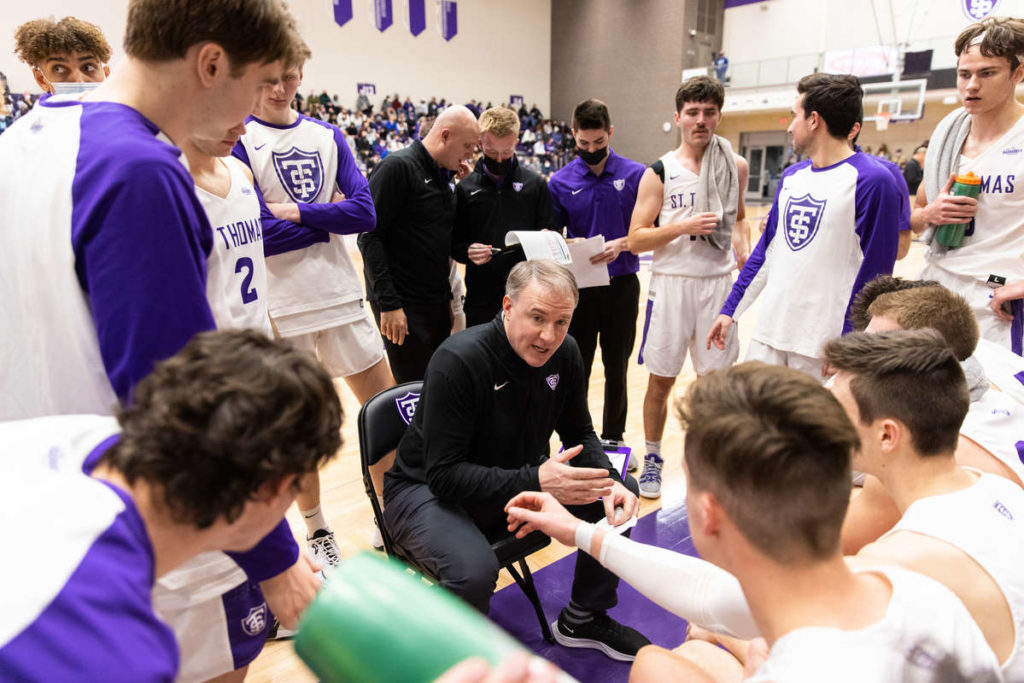When Rico Blasi learned of a chance to get performance data about his hockey players – information to show if they were sick, stressed out or training at the wrong intensity – he jumped at the opportunity. After all, with an unprecedented move to Division I men’s hockey, the coach knew any competitive advantage would be beneficial.
But here’s what made this opportunity different – the test administrators pulling this data weren’t working for a big-name clinic or sports laboratory. They were St. Thomas students in the Morrison Family College of Health Department of Health and Exercise Science (HES) partnering with Athletics to test an array of physical fitness measurements.
“It's a great collaboration between academia and athletics, which is important and fits who we are at St. Thomas,” Blasi said.
Data from the testing can help coaches decide how intense a practice should be, how long it takes an athlete to recover after physical exertion, and what kind of training is needed for an athlete to hit peak performance.
However, it’s more than the student-athletes who benefit from this experience.
The partnership between HES and Athletics, which became official in summer 2021, provides an opportunity for HES students to obtain unique hands-on experience working with coaches and athletes, while the D-I athletes can participate in quality testing on campus rather than off-site at a corporate-run medical facility.
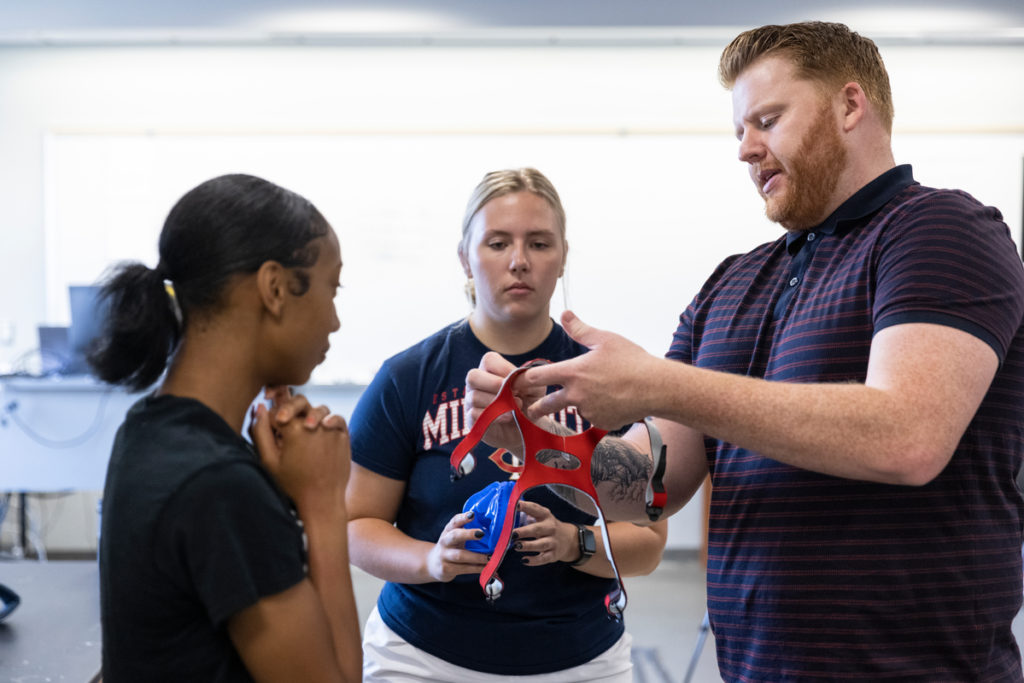
“It’s a win for both sides,” said Paul Mellick, associate professor and chair of Health and Exercise Science in the Morrison Family College of Health. “Our students are more a part of the D-I experience than they would be at many other institutions. The coaches are relying on them to give data, and whatever the coaches do with that data is up to them.”
A “game changer”
More than 20 students work with four athletic teams: men's hockey, women's basketball, women's soccer, and the swim and dive team. Mellick, who oversees the partnership, expects to add more teams to the roster.
The majority of the student workers are HES majors, and they are no strangers to the equipment, Mellick said. During classes, these students often perform tests on other classmates in a lab setting with professors.
One test is the VO2 max test, which measures cardiovascular fitness. A person taking the test wears a mask and heart rate monitor while running on a treadmill to generate data on oxygen usage.
“It’s a 14-minute test where you have to run until failure, so getting another student to take the test is difficult,” said Caleb Limesand, a senior majoring in exercise science with plans on attending graduate school for physical therapy. “Now working with D-I athletes, they’re really competitive and used to training. It wasn’t an issue getting them to run to that point.”
Exercise science major Natalie Nafzger sees how student-athletes are willing to push themselves physically during testing. She calls it a “game changer” for health and exercise science majors.
“None of the students had worked with student-athletes before,” said Nafzger, a senior who plans to be a physical therapist. “They’re D-I athletes and obviously care about what we’re doing and the data they produce. If we were testing just some person in the lab, the data isn’t really important to them.”
Real-world training
Jemal Griffin, senior associate athletic director, said it’s not unusual for student-athletes to undergo tests like the V02 max, Polar Team Systems (real-time heart rate measurement) or Bod Pod (a body composition tracking system). What is unique at St. Thomas is for those athletes to do testing on campus with fellow students who are trained to use the expensive equipment.
"From a student standpoint, when it comes to the educational component for the Health and Exercise Science Department, it can't get any better than that because they're actually living out what they're learning every day,” Griffin said. “They get to see the data and then have conversations with coaches and explain what it means and how it could impact their team.”
What the HES students are doing is the sports science part of sports performance, which also includes strength and conditioning, sports medicine, mental performance and nutrition, Griffin said. All the components work together to ensure student-athletes are maximizing their athletic potential.
"By getting to work with athletes, coaches and trainers, I’ve been able to get to know people and learn how to communicate and administer tests, which is what I'll be doing in my future career,” Nafziger added. “That's extremely beneficial. It gives students an edge on post-graduation plans and looks great on a resume. This whole experience will serve me in my future career.”
Mellick said overseeing the partnership between HES and Athletics has been rewarding and some of the most fun he’s had during his time working with students. After this experience, he said, it’ll be “second nature” for students to conduct exercise testing in their future jobs.
“We’re giving our students a chance to be part of something bigger,” Mellick said. “To me, that’s just awesome.”
